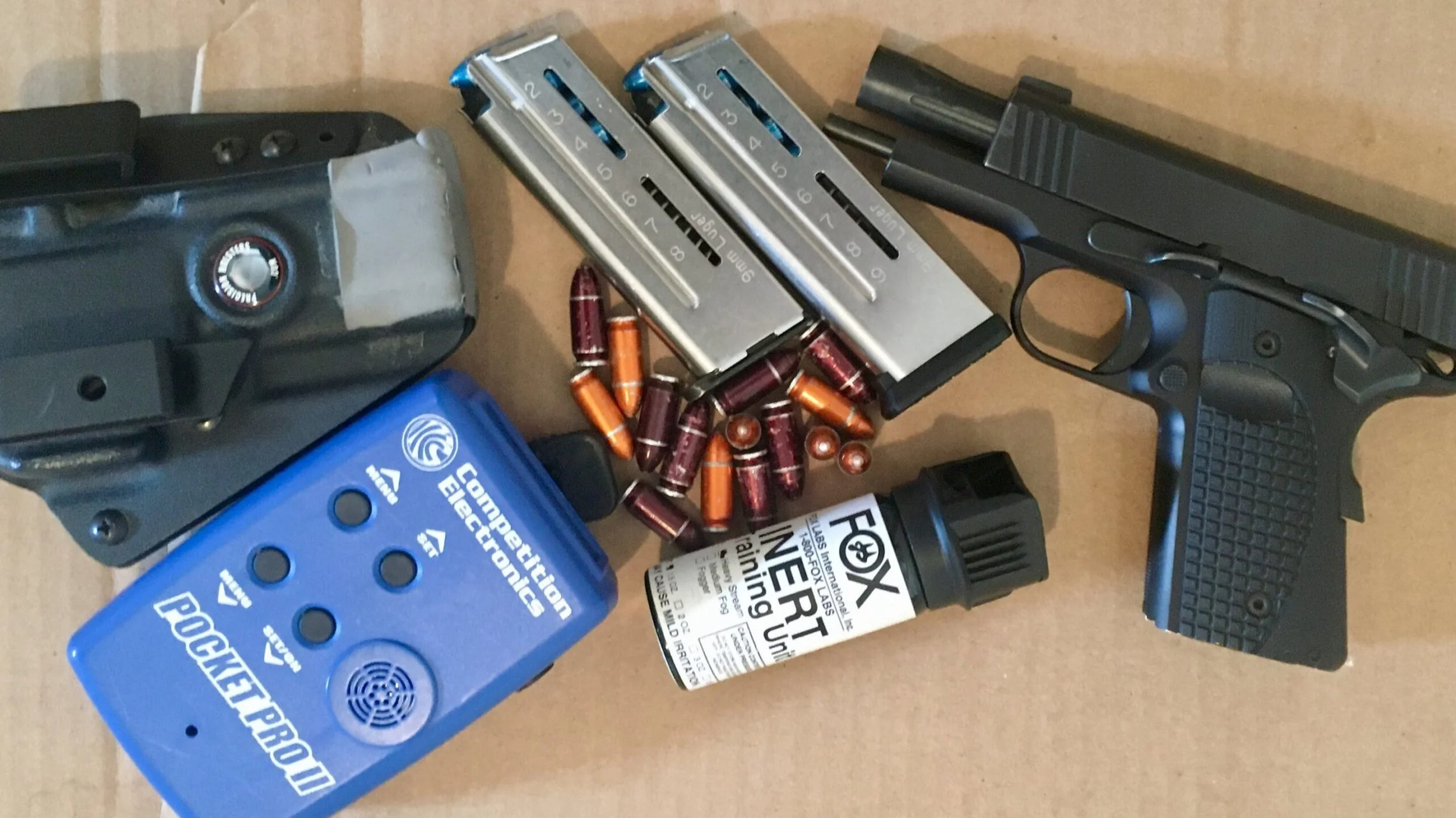Dry Practice Function Stacking: Lighting
With a lot of Americans working from or otherwise hanging out at home, I hope a lot of my readers are using their time to learn some stuff. One thing I hope everyone stuck at home is doing is dry-practicing. Another thing that might nudge some into dry practice is the current ammo shortage (don't forget, snap caps are cheap!). Today I'm going to talk about some very simple, low-cost things you can to do increase the value of your dry practice time.
This article contains affiliate links.
Intro: Read this!
First, I am not a fan of the term "dry fire." If all you're doing is "firing" you're missing out on a massive spectrum of things you can practice. If you've followed my dry practice posts this year you've already gotten a taste of this. I've practice presentation, trigger, reloads, malfunction clearance, SHO stuff. . . and I'm a long way from done.
Second, novelty is your enemy. If you've already encountered something in training that closely mirrors an actual encounter you experience, you already have a mental model constructed to deal with that situation. For example: the first time you see your sights in reduced light shouldn't be while you're defending the lives of your wife, your child, and yourself. You should know what that looks like and not be surprised and distracted by it. We can't possibly imagine everything - there are simply too many variables out there. We can, however, chip away at the iceberg of novelty by accounting for as many of these variables as possible and adding them into our routines.
A couple caveats: First, ensure you are adhering to safety best practices. Now is not the time to be in the hospital because of a gunshot wound, or the time to be You don't need much gear to dry practice but I do strongly recommend the use of some snap caps. I strongly prefer A-Zoom snap caps. I'd be willing to bet there isn't a run on these and they will last you for a very, very long time. Get some now.
Let's get into today's topic. Today I am going to talk about the variable of lighting.
Variable 1: Lighting
In the past few years a lot of folks "in the know" have reevaluated some things about low light. For example, even though a lot of gunfights happen during hours of darkness they don't typically happen in darkness. Almost everywhere that is reasonably populated is reasonably well-lit. This has changed some perspectives on the use of night sights, weapon-mounted lights, etc.

I would urge some caution against going too far down this rabbit-hole, though. All that lighting out there is not even spread, and gunfights don't only happen at high-noon on cloudless days. Walk down a street in your city street at nighttime. As you pass under trees, awnings, construction scaffolding, pass by alleys, your lighting changes. As your distance from street lights increases or decreases, it influences the light available to you and how you perceive it (back-lighting, fore-lighting, etc.). As the angle of the nearest light changes as you move, so does the way you are able to utilize this light.

Additionally, there is another variable to consider: the bad guy and his position relative to lighting. Is he right under a streetlight? Is he backed into a recessed doorway, or under that dogwood that is in full bloom? Is he hugging the building, or is he in a position that puts a light right in your eyes when you look at him?

Changing Lighting
One of the things I try to get creative with when setting up my dry practice session is manipulating the lighting. I am fortunate to have a fairly large space in my basement dedicated to dry practice, with several lighting options.
If you aren't so fortunate, how can you modify what you have? Can you borrow a lamp or two for a few minutes a day (or place on on "permanent loan" from your guest room)? Can you strategically cover some windows to modify the light in your space, or add or remove bulbs from your light fixtures? If you dry practice outside, consider varying the times of day. Even if everything is done in full daylight (not ideal) there is still some value in having the sun hit you, your sights, and your target at different times (I do dry practice outside a lot in the summer).
Here are a few of the variations I've worked with this year:
Side-lighting the target. This photo comes as close as any to representing the true light level in the basement. Although it looks like full-daylight out the window in this pic, it was taken around 6:30 AM, just after dawn.

Lighting the foreground. In this photo the foreground is well-lit. What is hard to convey by photo is how poorly lit the area the shooter (me) is standing in is.

Back-lighting the shooter.This photo does an OK job, but the targets are still much darker than it looks like here.

Low-light. I haven't dedicated any time to it this year, but you probably should have at least a little experience training with your handheld light. You are carrying a flashlight, right? As I mentioned earlier, there's a new dogma emerging that "nothing happens in actual darkness." That is true in most places, but it still gets very, very dark at my house.

Full light. I don't think you need a photo for this one. This is probably where 99.99% of your range sessions are happening, so make sure you're getting plenty of everything else in dry practice. Still, this is the condition I recommend dry practicing in for those skills that you're still shaky on.
I hope this helps you continue (or maybe even improve) your training regimen under the current unpleasantness we are facing. Now go dry practice!

